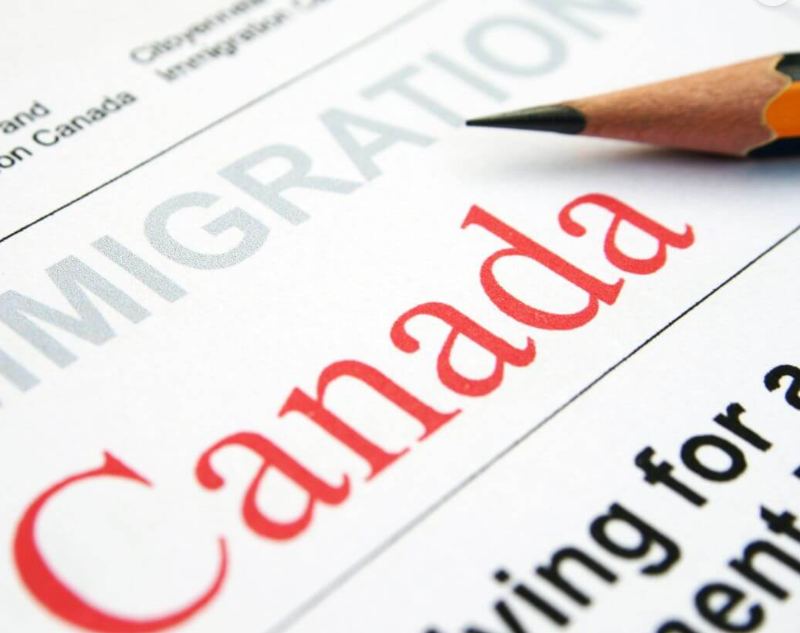Get free consultation
Fill out the form and we will contact you
Canada regularly ranks at the top of the world’s best countries to live in. With a clean, safe environment and excellent social benefits, Canadian residents enjoy a happy and high-quality life.
So, how can one immigrate to Canada? What is the most convenient way to immigrate to Canada? Second Citizenship will provide detailed information on the steps and options for immigrating to Canada in the following article!
Immigrating to Canada through skilled labor is currently one of the easiest methods, thanks to the Canadian government’s policies aimed at attracting foreign workers. The Canadian government is actively seeking talented individuals to support the development of the economy and address the aging population issue.
Canada stands out with its high quality of life, excellent welfare system, safe environment, and world-class education system. To welcome international workers, the Canadian government offers various immigration pathways, including student, skilled labor, investment, and family sponsorship programs.
Currently, immigrating to Canada through skilled labor is one of the most favorable methods. The Canadian Skilled Worker Immigration Program is designed by the Canadian government to attract highly skilled workers from around the world to contribute to the country's economy.
Canada is attracting skilled workers for immigration
This program is divided into two main groups: the Federal Skilled Worker Group and the Provincial Skilled Worker Group.
Work Experience: Applicants must have at least one year of full-time work experience (or the equivalent) in the past 10 years, in one of the occupations listed in the National Occupational Classification (NOC) for immigration to Canada, classified under levels 0, A, or B.
Language Requirements: Applicants must meet the minimum language requirements for one of Canada’s two official languages, English or French.
CRS Points System: Applicants must score at least 67 points under the Comprehensive Ranking System (CRS) of IRCC. This system evaluates and ranks applicants based on factors such as human capital, skills and work experience, and educational qualifications.
CRS System
Immigrating to Canada through the Provincial Skilled Worker program is often easier than through the Federal Skilled Worker program. To participate in this program, applicants need to meet the specific requirements of each province.
Each province has a different list of priority occupations. For example, Ontario prioritizes occupations related to banking, advertising, and business services. Therefore, applicants should research the priority occupations of each province to choose the one that best matches their skills and conditions.
In addition to other immigration methods, clients may consider the Canadian investment immigration program. This is an ideal choice for entrepreneurs and international investors who wish to expand their business operations and settle in Canada.
Entrepreneurs and Investors Immigrating to Canada
The investment immigration program allows entrepreneurs and investors, along with their families, to obtain legal permanent resident status in Canada, thus enjoying the benefits of permanent residents. The provinces of Canada have different investment policies: provinces with developing economies often require lower investment amounts to attract capital and stimulate economic growth. On the other hand, large and prosperous provinces require higher investment amounts.
Immigration programs to Canada through investment that you can consider include:
Federal Investment Immigration Program
Start-up Visa Immigration Program
Self-employed Visa Immigration Program
Additionally, you can explore investment immigration programs specific to each province, such as:
Ontario
Quebec
British Columbia
Manitoba
New Brunswick
Newfoundland và Labrador
Nova Scotia
Saskatchewan
Prince Edward Island
Another popular option for immigrating to Canada is through the study program. After completing educational programs in Canada, such as college, university, or postgraduate studies, international students have the opportunity to work in Canada for 1 to 3 years.
International students who complete their studies can stay in Canada to work
After having at least one year of full-time work experience in Canada, international students who graduate from Canadian educational institutions can apply for immigration through the work program. The immigration process through the work program is often much easier compared to the federal immigration program, especially if you choose the provincial nomination program.
To qualify for immigration through the provincial program, international students need to:
Complete a full-time course in the province where you wish to settle.
Find full-time employment in that province and have legal documentation confirming it.
Benefits of immigration through the provincial program for international students include:
Manitoba: 60% of tuition fees are reimbursed through the income tax program.
Working time: You are allowed to work up to 3 years after completing a course lasting at least 2 years.
Work requirements: Only 6 months of legal employment are needed to qualify for immigration.
Provinces like Ontario, Quebec, Alberta, and Nova Scotia are currently attracting many international students thanks to favorable immigration programs and abundant job opportunities.
#4 Immigration to Canada through sponsorship (Family Reunification)
If you have relatives in Canada, the family reunification immigration program is an excellent option to bring your family to settle together. The Canadian government allows citizens and permanent residents to sponsor their family members to come to Canada in the following situation:
Sponsoring family members to immigrate to Canada
Sponsoring grandparents/parents: Citizens or permanent residents can sponsor their grandparents or parents to come to Canada.
Sponsoring spouse: Bring your spouse to live in Canada.
Sponsoring biological children: Biological children under 22 years old who are unmarried, or over 22 but disabled and dependent on their parents.
Sponsoring adopted children: Adopted children under 18 years old, who are unmarried and not living with anyone else.
Sponsoring siblings, orphaned nephews/nieces: Siblings, orphaned nephews/nieces under 18 years old and unmarried.
Sponsoring other relatives: Uncles, aunts, cousins if there are no other relatives in the above categories or no other family members residing in Canada as permanent residents.
The sponsored person needs to prepare the following documents to complete the application:
Visa application form
Passport
Criminal record check (Form #2)
Proof of relationship with the sponsor: Examples include birth certificates, marriage certificates.
Passport-sized photos: 4.5×4.5 cm according to visa application standards.
Proof of financial support: Bank savings, property ownership certificates, job confirmation letters, etc.
Ensuring all required documents are provided will help the visa and sponsorship process proceed smoothly and efficiently.
Canada is currently facing a severe labor shortage, with thousands of job positions left unfilled. At the same time, the aging population is making it increasingly difficult to maintain and grow the economy.
Canada invests heavily in developing its education system
To address this issue, the Canadian government has prioritized attracting highly skilled workers and international investors to live and work in the country. One effective solution Canada has implemented is the creation of immigration programs designed to facilitate the settlement of immigrants.
Among the immigration programs, the Co-op Internship Program (Co-Operative Education Programs) stands out as a great opportunity for candidates who wish to experience the labor market firsthand in By participating in the Co-op program, students are not only granted a study permit but also a work permit, allowing them to work and live in Canada. Moreover, the Co-op program opens up the possibility of becoming a permanent resident in Canada, offering stability and opportunities for personal growth in the land of maple leaves.
This article has provided valuable information on the easiest methods for immigrating to Canada today. For more detailed and specific advice on Canadian immigration programs, please contact Second Citizenship. We are ready to assist you in learning about and taking the necessary steps to successfully settle in Canada.
Fill out the form and we will contact you
![4 Easy Ways to Settle in Canada [2024] - Benefits of Immigration](https://quoctichthuhai.com/storage/cach-dinh-cu-canada-de-nhat6-430x430.jpg)





